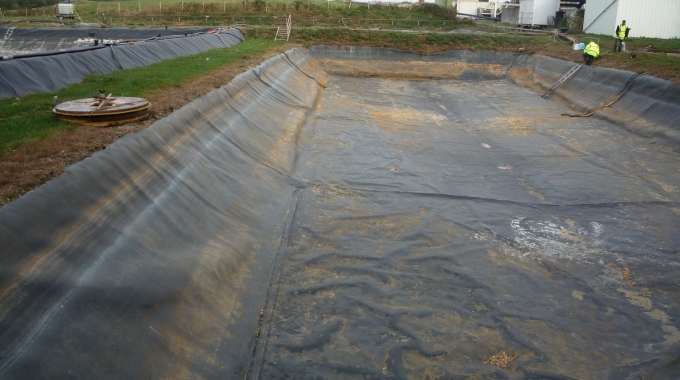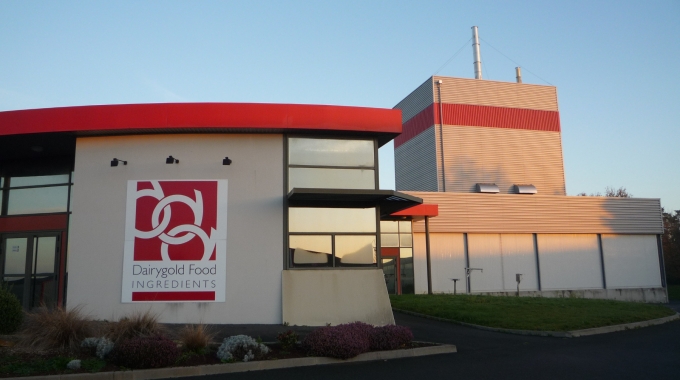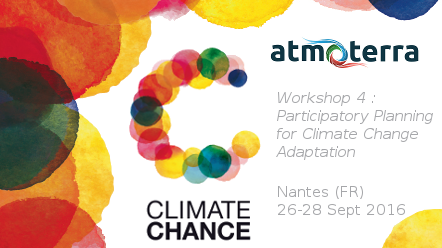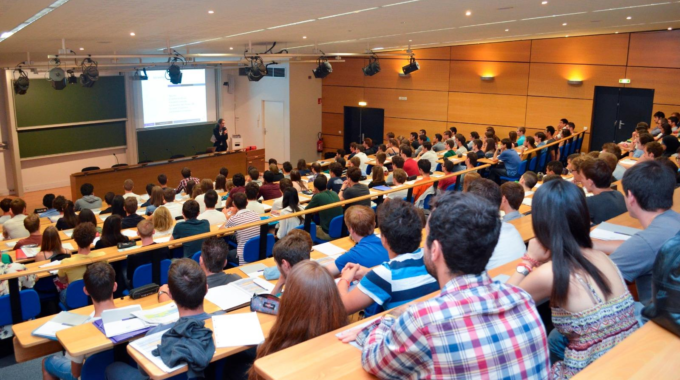
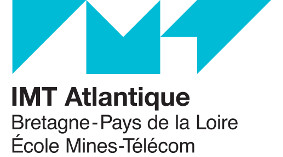 Between March and July 2017, we supervised 3 groups of PM3E (Project Management for Environmental and Energy Engineering) International Master students from IMT Atlantique.
Between March and July 2017, we supervised 3 groups of PM3E (Project Management for Environmental and Energy Engineering) International Master students from IMT Atlantique.
This Integrated Engineering Project is a free teaching format in which students have to develop a project in Environmental Engineering. This project aims at giving them the opportunity to apply the skills gained during lectures and tutorials. It can be a research, industry or management orientated project for which students have to address an environment related issue.
The following projects were implemented during the course of this project:
|
Project Acronym: |
Indoor Matrix |
E3M |
CEAE |
|
Project Title: |
Improving Indoor Air Quality knowledge base through |
Evaluating the Efficiency of Emergency Measures |
Linking Carbon, Energy and Air pollutant Emissions factors to design smart and efficient long term regional strategies |
|
Name of Students:
|
MORENO MAXINEZ Lorena RAHMIYATI Lutfia |
|
URIBE PEÑARANDA Oscar Mario |
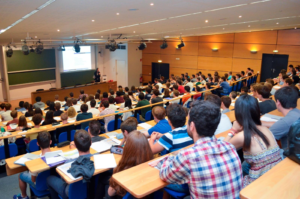 Project Indoor-Matrix
Project Indoor-Matrix
Improving Indoor Air Quality knowledge base through the development of pollutant-activity-specific matrix
Executive summary
The purpose of this project is to improve indoor air quality knowledge base through development of pollutant-activity-specific matrix. Indoor Air quality is a rising concern in various enclosed environment. A significant number of pollutants may be found indoor coming from human activities, building construction, furniture, household products, heating system, and outdoor air. The classroom and restaurant in IMT Atlantique, Nantes, France, is taken in consideration for this case study.
Predicting and analyzing possible types and source of pollutants in potentially contaminated indoor environment is the key principle for
this project. In order to fulfill the objectives of the project, the methodology used is scientific and evidence based which allow to gather the indoor air pollutants found in a classroom and the restaurant of the university.
This project develops a generic matrix for the toxic compounds which are subdivided in classes according to their similar features. For this case, the chemical classes used by the Agency for Toxic Substances and Disease Registry have been chosen.
There are 14 categories of hazardous substances such as benzidines, aromatic amines; dioxins furans, PCBs; halogenated pesticides; hydrocarbons; inorganic substances; metals, elements; nitrosamines, ethers, alcohols; organophosphates and carbamates, etc.
The appropriate references are used to determine the qualitative scale in order to determine the likeliness of presence of those substances in the air. The pollutants are classified by scale from 1 to 5 in certain categories depending their concentration and presence in the classroom and restaurant. The developed matrix presents the sources of the pollutant in the classroom and restaurant linked with the specific pollutants.
![]() Download the final report and the poster here.
Download the final report and the poster here.
Project-Indoor-Air-Matrix-ATMOTERRA-IMTA-2017
Project-Indoor-Air-Matrix-ATMOTERRA-IMTA-2017-poster
Please contact us if you wish to obtain the different spreadsheets and related materials.
Project E3M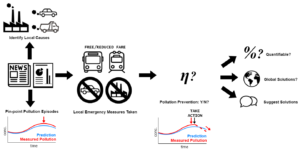
Evaluating the Efficiency of Emergency Measures taken to reduce or mitigate air pollution episodes in urban areas
Executive summary
This report presents long term strategies to address climate change, air quality, energy and their interconnection for the region Pays de la Loire, France. Indeed, the focus on the latter interconnection is a critical point. Solving the three main environmental issues carbon, air quality and energy independently could lead to several counter-productive actions afterwards.
The emission factor methodology will be used to formulate efficient strategies based on the current situation. Therefore, the first step would require defining emission factors (based on fuel, technology or distance) as well as activity data to evaluate the impact of several activities on air quality. More precisely, a focus will be on formulating strategies targeting the energy, transport, agriculture and buildings (heating) sectors.
Results show that in the energy sector an optimum reduction of 78.16% could be achieved by shifting to wind energy. Regarding the transportation sector, shifting from cars to walking/biking could result to an overall reduction of 9.25% and a slightly lesser amount could be obtained by using electric cars instead. In the building sector, 50.00% to 25.00% of greenhouse gases could be avoided by combining energy efficiency with the use of renewable energies for meeting heat demand. In the agriculture sector, by decreasing the mineral fertilizer doses and improving manure application, 0.31%of NOx emissions can be reduced, while 9.75 to 29.11 % of emissions NH3 can be avoided. Globally, the presented strategies were able to decrease the pollutants up to 22.43%.
![]() Download the final report and the poster here.
Download the final report and the poster here.
Project-Air-Quality-Emergency-Measures-ATMOTERRA-IMTA-2017
Project-Air-Quality-Emergency-Measures-ATMOTERRA-IMTA-2017-poster
Please contact us if you wish to obtain the different spreadsheets and related materials.
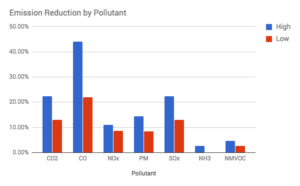 Project CEAE
Project CEAE
Linking Carbon, Energy and Air pollutant Emissions factors to design smart and efficient long term regional strategies
Executive summary
Cities are facing air pollution episodes resulting in health impacts of local habitants and breach of air quality standards. Based on regional pollution dispersion models, cities often take emergency measures to reduce emissions during these events. This report presents an evaluation of some of these emergency measures by quantifying their effectiveness in reducing the concentrations of the pollutant in question.
Cases of pollution episodes and public air quality data were gathered by media review. Two winter cases from Europe and three summer cases from California, USA were investigated. Data on weather conditions, predicted and measured concentrations were gathered and analysed to verify if emergency measures were effective.
To reduce PM10 concentrations in Brussels in March 2014, the city imposed a speed limit of 50 km/hr. Only minor differences in PM10 concentrations were found between traffic and suburban zones. On the first day after the limit PM10 concentrations actually increased slightly, and on the third day dropped to half when wind speed increased to its usual levels. The emergency measure was found to be ineffective.
In March 2014 Paris suffered an important PM10 pollution event of 13 days . Free public transportation was implemented all – over the event but it was not effective . After 12 days, alternative traffic was applied and seemingly produced an improvement; however, the driving force is most likely the wind gained speed and dispersed the pollutants .
In Bay Area, California, the measure against ozone was to offer Free Transportation Days (FTD). In 5 out of 6 cases, after the measure took place, ozone level was reduced – but often with temperature reduction and increase in wind speed. Similar to Brussels case, main contributor to ozone level change was the weather condition and not the measure implemented. Though effectiveness of FTD was inconclusive, generally two days of consecutive FTDs were more effective than single-day FTD.
![]() Download the final report and the poster here.
Download the final report and the poster here.
Project-Air-Energy-Climate-Measures-ATMOTERRA-IMTA-2017
Project-Air-Energy-Climate-Measures-ATMOTERRA-IMTA-2017-poster
Please contact us if you wish to obtain the different spreadsheets and related materials.
Open Science
This project is made available as part of the Open Science engagement. An important aspect of Open Science is a move towards open access to research results funded with public money. Facilitating access to those results encourages the re-use of research output. Science and research have always been open, but some of the processes for producing research and disseminating its results are not.
It is now widely recognised that making research results more accessible to all societal actors contributes to better and more efficient science, and to innovation in the public and private sectors.
This is in compliance with the RECOMMENDATIONS – EC COMMISSION RECOMMENDATIONof 17 July 2012 on access to and preservation of scientific information (2012/417/EU)
Photo: Project Indoor Matrix



